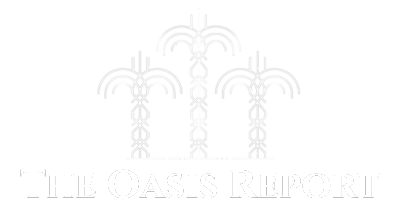Limited impact of Iran-Israel conflict
Real estate is driving growth
The UAE’s major banks will probably achieve high single-digit loan growth in the second quarter, with June’s Iran-Israel conflict unlikely to dent borrowing demand, according to analysts.
Increased lending should more than offset slightly lower net interest margins and satisfy equity investors, who have bought banking stocks as a proxy for the UAE’s buoyant economy, which is forecast to expand 4 percent this year according to the International Monetary Fund.
“I do not foresee any drop in borrowing demand, which has remained fairly strong,” says Chiro Ghosh, vice president for financial institutions at Bahrain’s Sico Bank, when asked whether the Iran-Israel conflict would impact corporate lending.
“I do not believe [the war] will trigger any major strategy change for the banks, assuming no further escalation.”
Sherif El Etr, a banking analyst at CI Capital in Cairo, says the war was too short-lived to affect banks’ lending practices or consumer or corporate borrowing.
He forecasts UAE banks’ second-quarter loan books will expand 8-9 percent versus the corresponding period of 2024, and 2 percent compared with the preceding quarter. He covers First Abu Dhabi Bank, Emirates NBD, Abu Dhabi Commercial Bank, Abu Dhabi Islamic Bank and Dubai Islamic Bank.
Dubai real estate will be the main driver for quarterly loan growth, says El Etr. Lower interest rates and the prospect of further rate cuts should boost borrowing demand from both real estate developers and investors seeking to purchase property in the longer term, he explains.
UAE domestic banks’ total credit totalled AED1.73 trillion ($471 billion) as of March 31, a central bank report published this week reveals. This is up 5.9 percent year on year and 1.7 percent higher than at the end of 2024.
As lending expands, usually so does the amount of non-performing loans (NPLs). Yet problem loans have declined both in absolute terms and as a percentage of total lending, S&P Global data shows.
“The outlook for NPLs is benign,” says El Etr.
Banks’ second-quarter net interest margins will probably shrink versus the prior-year period, he predicts. US interest rates have fallen by 1 percentage point to 4.5 percent following three reductions from August to December last year. The UAE central bank mirrors US rate moves due to the dirham’s dollar peg.
Deposits
The Iran-Israel conflict, which ended tentatively in ceasefire this week without a conclusive peace agreement, may dim the allure of UAE banks as a safe place to park deposits.
This decade, UAE banks have received an influx in deposits from non-resident foreigners, beginning with the Covid-19 pandemic. Other crises such as the collapse of Silicon Valley Bank in March 2023 heightened the appeal of UAE government-backed lenders.
“First Abu Dhabi was the biggest recipient and beneficiary of these inflows,” says El Etr.
Central bank data, which is published with a three-month lag, along with banks’ second-quarter earnings, should reveal whether the UAE’s geographical proximity to Iran and simmering regional geopolitical tensions led depositors to repatriating savings.
Substantial deposit withdrawals may raise banks’ funding costs. Deposits are the cheapest source of funding for banks.
UAE bank deposits totalled a record AED2.48 trillion on March 31, the latest central bank data shows, up 64 percent versus January 2020 according to AGBI calculations. From December 2015 to January, sector deposits grew only 18 percent.
Valuations
From a price-to-earnings perspective, Abu Dhabi banks are more expensive than their Dubai counterparts; the trailing PE ratio of both FAB and ADCB is 10.5, while ADIB’s is 13.5. That compares with just 6.6 for Emirates NBD and 8.7 for Dubai Islamic, according to Simply Wall St.
This follows a rally in Abu Dhabi banking shares. ADIB is up 51 percent this year, while FAB and ADCB have gained 22 and 28 percent respectively.
Latest headlines from the Middle East conflict
For more news and analysis, see our Iran-Israel coverage



